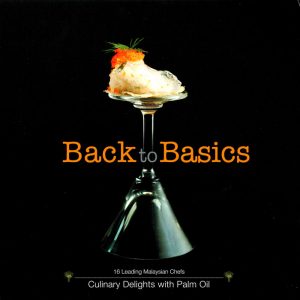The next big trend among America’s foodies may be Malaysian cuisine

Malaysian cuisine –among the top trending flavors for 2014. This news delights Chef Gerard Viverito, who has built his career by focusing on functional, sustainable cuisine. Chef G. spent several months in Malaysia, working side-by-side with many of the country’s leading chefs. Now with the release of the Back to Basics cookbook, he is excited to show everyday cooks how easy it is to prepare nutritious Malaysian meals for the family dinner table.
About Malaysian cuisine
Malaysian cuisine is infused with influences from China, India and Southeast Asia. This is a largely untapped cooking style here in the U.S, blending familiar flavors with the more exotic. Without the heat associated with some Asian cooking styles, Malaysian cuisine combines such spices as turmeric, cumin, chilies, cardamom and coriander with aromatic seasonings including curry, tamarind, ginger and lemongrass.
It also relies heavily on sustainable Malaysian red palm oil, which has been consumed for more than 5,000 years. It is a staple in many parts of the world, and has recently begun to appear in more U.S. kitchens largely because of its health benefits. Professional and amateur cooks appreciate its versatility: It has a neutral flavor and can stand up to high heat without breaking down. It is cholesterol-neutral, naturally trans-fat free and non-GMO.
Meals that are good for you and the planet
“Here in America, we think of living organically and sustainably as a huge trend. In Asia, it has been their culture for thousands of years. They are light years ahead of us,” says Chef G., founder of Passionfish, a nonprofit organization dedicated to the issue of sustainability of the world’s seas. “Sustainability doesn’t end with the ocean. If we don’t take care of the whole planet, we’re all in deep trouble.”
He explains that in Malaysia, it is normal for ingredients to be purchased directly from the farmers and fishermen in the morning, and served that evening. “They buy local, and they serve food when it is the most nutritious.”
Chef G. wrote the forward to the Back to Basics cookbook. “Asia is a melting pot of cuisines, which is why we pulled together 16 chefs with different backgrounds for this book. Each was tasked with putting their spin on one common ingredient: Sustainable Malaysian red palm oil.”
He understands why Malaysian food is becoming so popular among America’s family cooks, who always seem to be stretched for time. “Most of Southeast Asia is so hot that people don’t want to be in the kitchen very long. They embrace recipes that are easy to prepare. Most of the Back to Basics recipes also utilize quick-cooking techniques that retain more of the nutrients and beautiful colors of the foods. In the amount of time it takes to heat processed food in the oven, you can have real, good-quality food that is also doing something good for the planet.”
How to stock your pantry for Malaysian Cuisine
Most of the ingredients you’ll need are available at your local supermarket, farmer’s market or Asian market. The top five ingredients that you should have available are:
1. Malaysian red fruit palm oil. “This is both healthy and cultivated responsibly. It can be used in place of canola oil for high-heat sautéing. Don’t confuse palm fruit oil with the much maligned palm kernel oil that was once widely used in movie popcorn. Red palm oil is non-GMO and comes from the plant’s fruit. It contains numerous micronutrients that make it heart- and brain-healthy.”
2. Lemongrass. “This is a stalky tropical plant with a lemon scent that grows most notably in Southeast Asia. Common in Thai cooking, lemongrass provides a zesty lemon flavor and aroma. It can be minced or pounded and added to dishes. Remove once the desired level of flavor is achieved.”
3. Ginger root. “This rhizome is a staple in Asian and Caribbean cooking. It provides a bit of heat and fragrance to cooked dishes. Sometimes it is pickled as well. Fresh ginger can be substituted for ground ginger at a ratio of 6 to 1, although the flavors are somewhat different.”
4. Cilantro. “A popular Mediterranean herb, cilantro is commonly recognized in Asia as leaf-coriander. It is widely used in savory dishes. It is similar to dill as both its leaves and seeds can be used as seasoning.”
5. Miso paste. “This is a traditional Japanese seasoning produced by fermenting rice, barley and/or soybeans with salt and the fungus kōjikin. Typically miso is made with soy. The paste is used for sauce, spreads, pickling vegetables or meats, and mixing with dashi soup stock to serve as miso soup.”
The Back to Basics cookbook is available from Amazon.com. Proceeds benefit the Malaysian Palm OilCouncil’s Wildlife Conservation Fund.




Leave a Reply